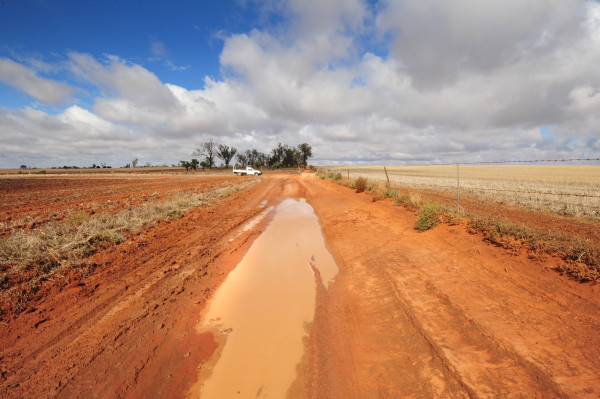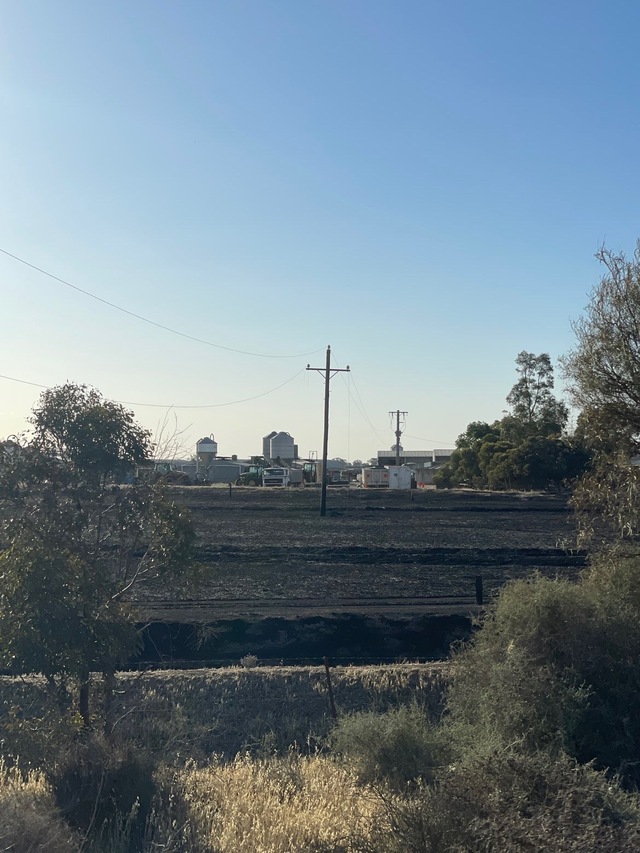THE rain might have started falling – just not in all the right places and nowhere near enough as far as many parts of northern Victoria are concerned.
But Kerang out towards Quambatook is doing OK, with June figures to date showing 24.4mm of a long-term 35.7mm average.
May was a shocker – just 5.2mm instead of 35.6mm but March and April were both above average.
Farms around Lalbert are a little all over the shop, while Birchip is struggling – this month a welcome 25.4mm against a monthly average of 35.8mm. But May was a meagre 2mm instead of 33mm, April saw 18.2mm of an expected 28.4mm but March did little to help with 21.9mm compared to the average 66.2mm.
Local farmer Ricky Sheahan who has properties across the area – cropping and livestock fattening – said the state of play on his farms matched the erratic rainfall.
He said in the long weekend rainfall he got as much as 30mm on some land down to around 20mm on his properties at Dumosa and Birchip.
“Right now, across the board, I would say we are travelling on average, helped because we have a bit of a spread,” Mr Sheahan said.
“Around Quambatook things are about normal, Lalbert is above average, but the Dumosa land is below average.
“Which, as I said, kind of averages out when you look at it all.
“We also feedlot lambs and have a contract with JBS to grow out pigs around Quamby as well – our cropping is all cereals and lentils, I don’t bother with canola, but we do a lot of oaten hay as part of our rotations to better manage our ryegrass challenges.”
VFF grains president Ryan Milgate said his assessment is the rain which fell heavily across the south of the state across the long weekend will get to the Wimmera and perhaps the southern Mallee.
But added the Mallee proper will be looking for a lot more.
“While I think a lot of crops will germinate off the back of this, there are isolated pockets which missed out on the rain, and there were no big falls into the Mallee,” Mr Milgate said.
“At best, I would say this rain has got us to the start line, but we will need three or four times this lot and we will need it sooner rather than later as the season is starting to get away from us now,” he said.
When the rain fell at the weekend Hamilton got 46.2mm (June average total is 66mm) but in May it only had 20mm against an average 54.2mm. Mortlake got a whopping 85mm (June average 55.7mm) but is playing catch up after just 13mm of a normal 57.2mm.
At the same areas such as Manangatang and Robinvale missed out completely.
Mr Milgate said he recalled in 2006 a late start in June still ended up as a strong season – but to achieve that you need everything after that to go in your favour.
And none of the rain which has fallen has made a dent in filling dams for stock water.
“Our sheep country near Hall’s Gap has also been seriously cold, so cold the other morning – at around -4.5C – we couldn’t get the tractor going to feed out grain,” Mr Milgate said.
“There’s still no, pasture, although this rain might help there a bit, although the cold weather won’t help.
“Fortunately, we have our own grain stored so are depleting our stocks, and our hay supplies will go down to the wire, normally we would be selling that but not this year.”
At Manangatang, Chris Plant, who is an all-cropping enterprise, was in one of the lucky stretches and received around 11mm.
But said most of her crops don’t look too bad and her early sown paddocks are all up and running.
She said she has benefited from the bigger fall some weeks ago but with little rain since then and the frosts things in her region, particularly in the heavier ground, have slowed down.
“We have been helped with fogs and heavy dew, and every little bit of that helps,” she added.
“I would say we have better than 95 per cent germination now but anyone’s late sown crops will be a little slower getting out of the ground.
“April and May were pretty warm, which helped us a lot, but there will be a difference between those sown early and the ret I would think at this stage – and our subsoil moisture from the summer has certainly given us a lot of help.”
Grains Council member Jason Mellings, who farms the wheatbelt near Warracknabeal, said the rain was good, more would be better, and he only received 16mm when he really wanted 25-30mm.
Mr Mellings said there was a real risk profile developing now for many growers.
“You could hardly describe conditions as wet, and many growers, me included, will be looking for more rain in a fortnight,” he said.
“We have had dewy and foggy mornings, which provides a small moisture hangover, and I did a scratch around on the farm this week and most things here are ticking along.
“But I would have to say the season is still on a wing and a prayer – you look at places such as Bridgewater and Jeparit which got plenty and then swing back through the northwest ad see way too many who got nothing.”
Mr Mellings said with the early emergence the season is out of the gate and people have committed to the expense of chemicals, but the rain must keep coming and there is a big gap between emergence and harvest.
“On the cost front all farmers are also looking at the darker clouds hanging over us – such as the Victorian government emergency services tax,” he said.
“That might have been put on the backburner because of the drought but it needs to be put in the bin. It’s not fair, it’s certainly not equitable and it’s not needed and if the Premier tries to bring it back again next year we will be back in front of the parliament protesting again.”







